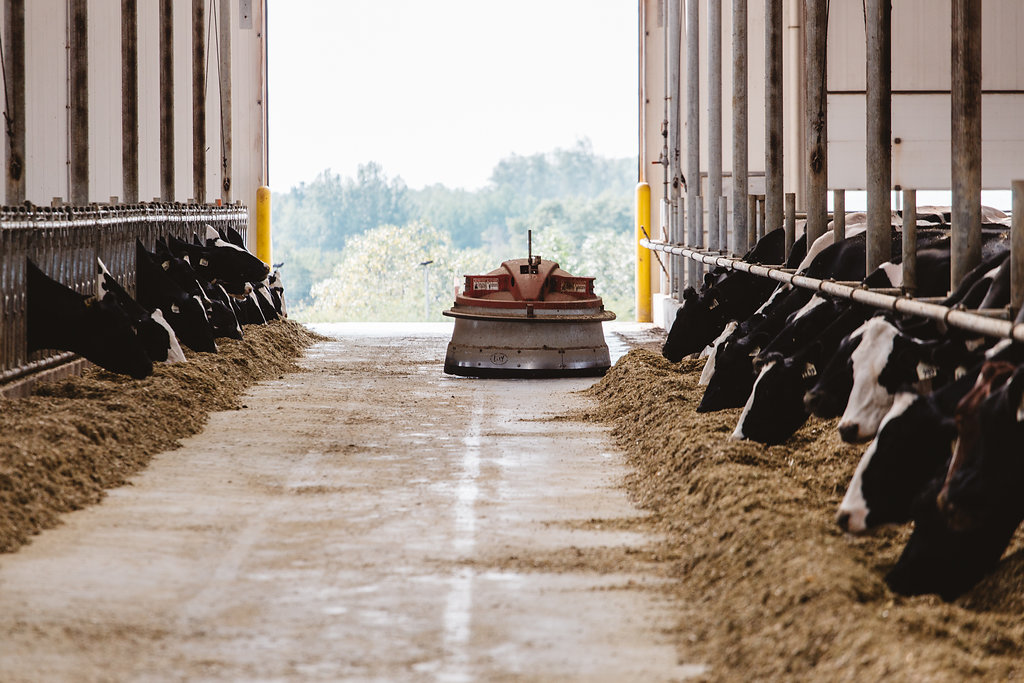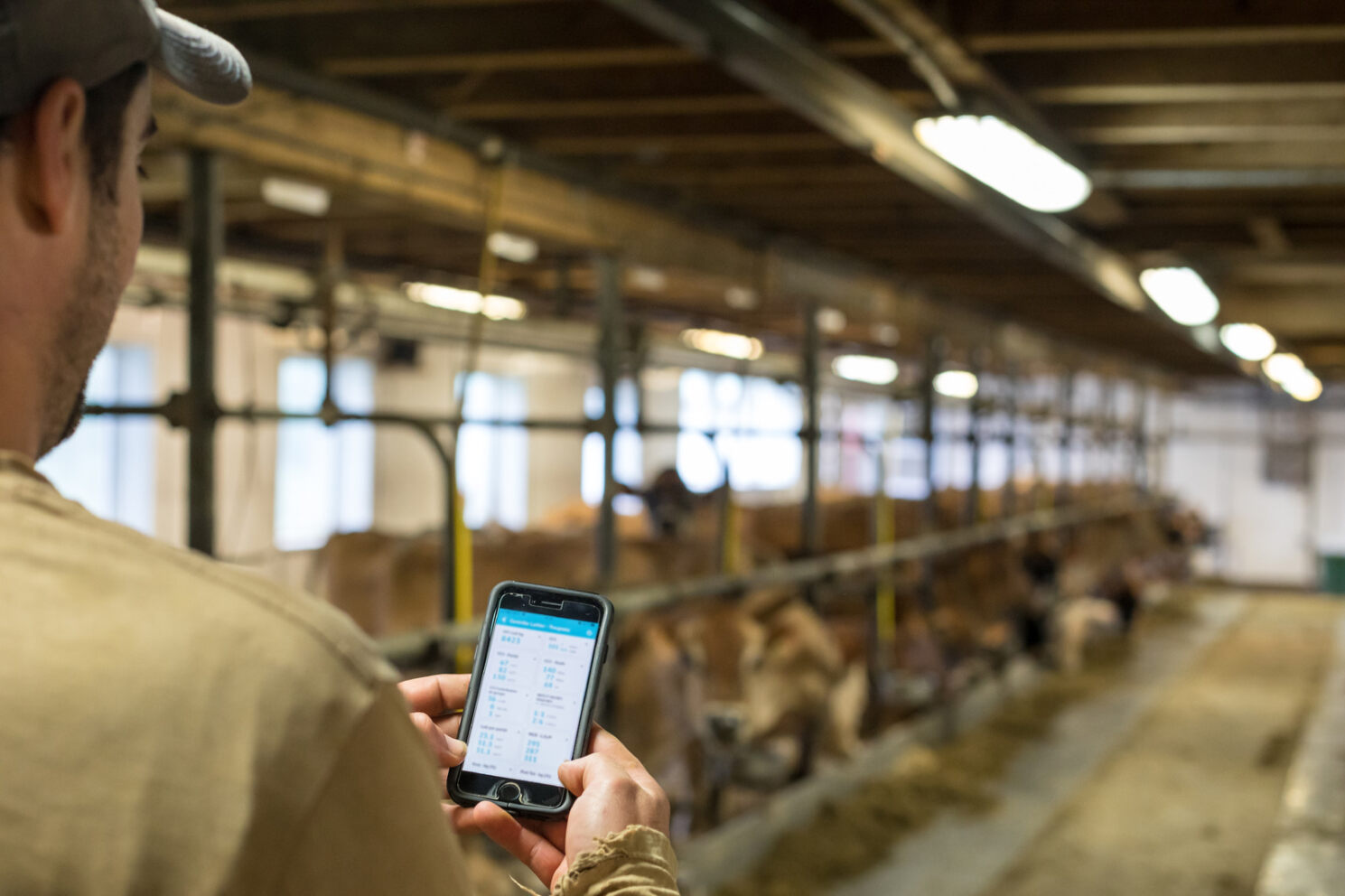Transition Period: The Crucial 6 Weeks for Lactation Success
- November 27, 2023
Summary: The transition period is marked by several challenges that affect the success of the entire lactation. Cows that develop diseases after calving, even if they receive treatment and recover, never quite match the same milk production and reproductive performance of cows that remain disease-free. Therefore, assuring a good transition period is crucial for optimizing herd performance and productivity.
* * * * *
The crucial phase for dairy cows is when they shift from being pregnant and dry to entering a period with substantial milk production. This phase is referred to as the transition period, and it requires several complex adjustments which are not easy for the cow! During this critical phase, cows must undergo significant changes in their metabolism, physiology, and hormonal balance to successfully start their lactation.
The transition period is marked by several stressors, including social stress due to pen changes, adaptation to a new diet, reduction in intake, calving, oxidative stress, inflammation, increased risk for diseases, and metabolic stress as they adapt to the onset of lactation. We expected the cow to overcome all those stressors and produce a substantial amount of milk. But what are the consequences if the cows are unable to prevail over these challenges?
Consequences of common challenges during the transition period
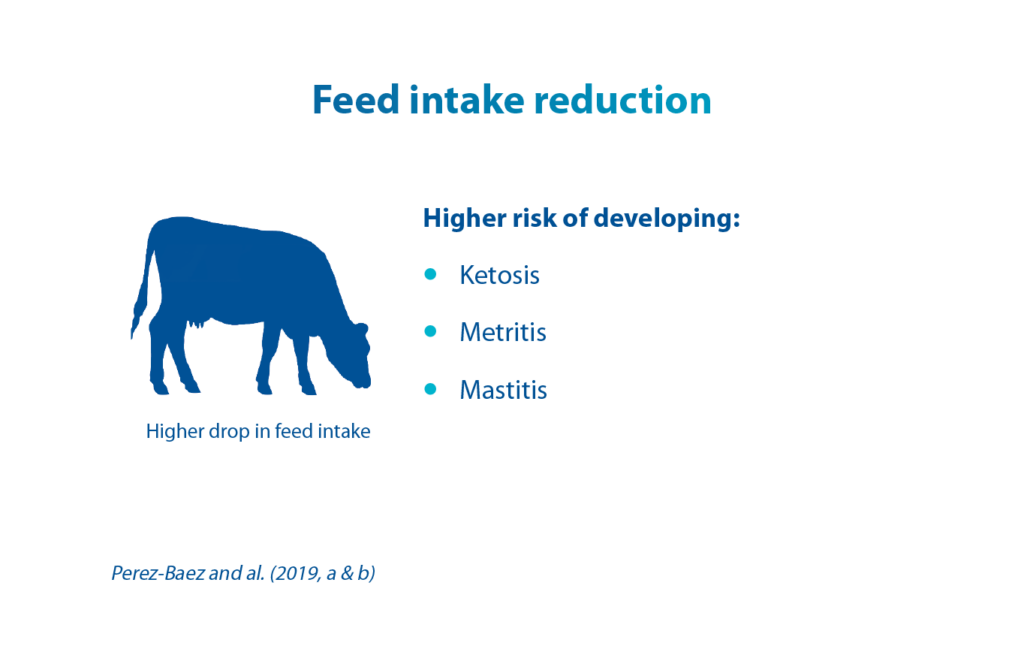
While cows have an increased demand for energy by the growing fetus and to produce colostrum and milk; we observe a decrease in their feed intake during the transition period. Since the cow is not eating enough and the requirements for nutrients are increasing, the amount of energy available is insufficient to fulfill all the needs. Although this imbalance of nutrients, mainly energy but also protein and minerals, is common to all cows, some cows have more pronounced challenges because of a larger drop in intake. Notably, cows experiencing a more substantial drop in intake during the dry period are at higher risk of facing difficulties during the initial stages of lactation and are more prone to developing diseases (Perez-Baez et al., 2019a and b).
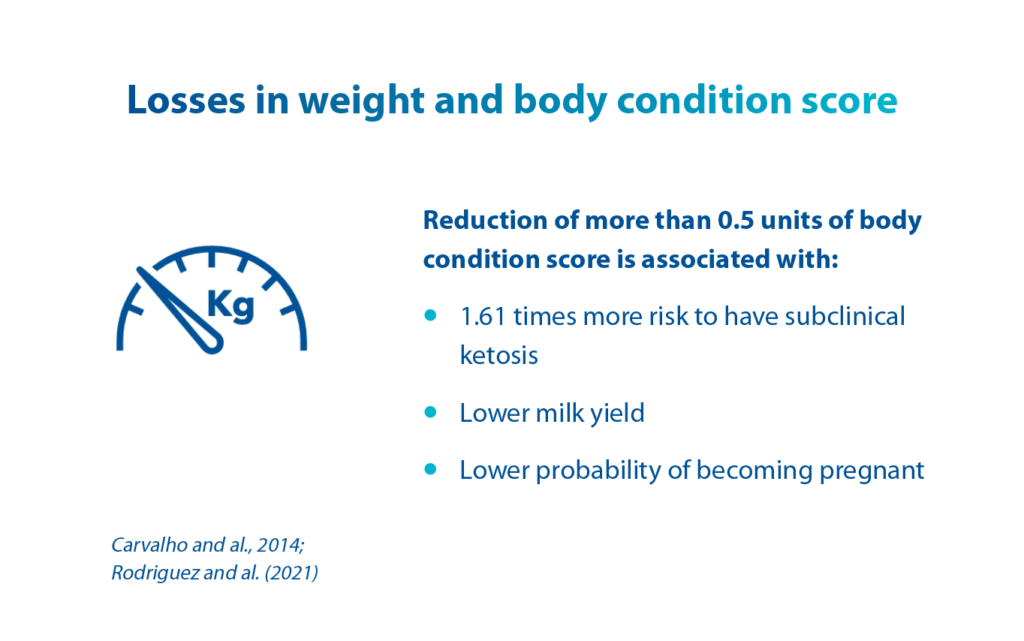
The insufficient intake combined with the increased need for energy makes the cow mobilize fat to support the body’s metabolism. For this reason, after calving, it is common for the cows to lose weight and reduce their body condition score. A small reduction in body condition score is acceptable, but a substantial amount of fat mobilization and a reduction of more than 0.5 units of body condition score, indicate a maladaptation to the beginning of lactation and are associated with negative consequences (Rodriguez et al., 2021).
Calcium Imbalance
A lactating cow requires three times more calcium than a dry animal, because of the requirement for colostrum and milk production. It means that within a week, the need for calcium triples, and mechanisms are activated to maintain proper calcium levels. Although some cows are able to mobilize the calcium and keep normal concentrations, others struggle with this regulation and may develop hypocalcemia. Hypocalcemia is linked to several adverse effects on cow performance.
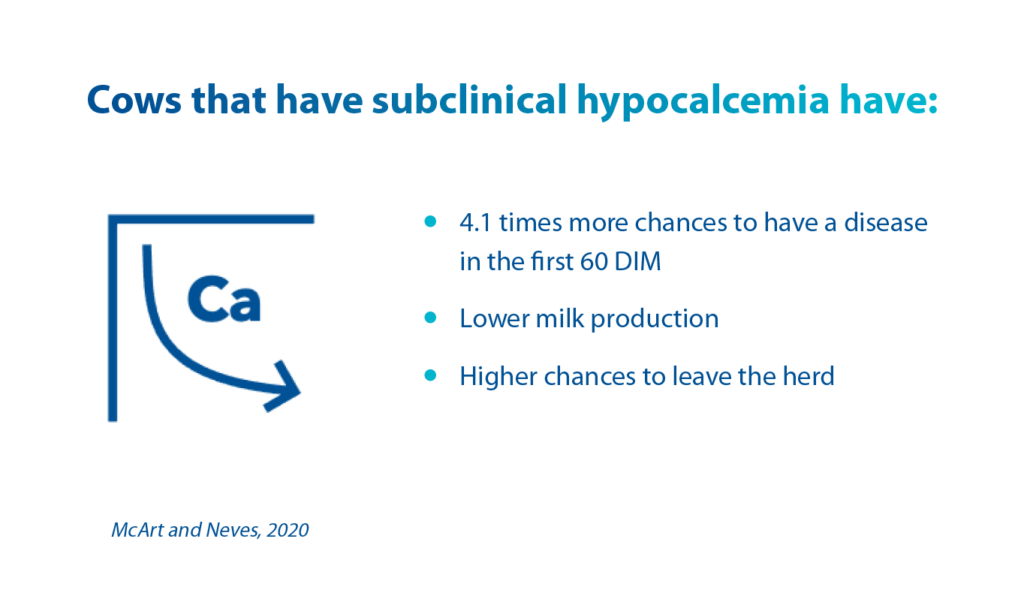
Inflammation
Inflammation is a natural process triggered after calving to aid in tissue repair and uterine involution. While some degree of inflammation is necessary and beneficial, some cows may develop an excessive inflammatory response due to excessive tissue damage during calving, uterine infection, and gut health issues, among other factors. The exacerbated inflammation during the transition period has detrimental effects on production and reproductive performance (Kerwin et al., 2022).
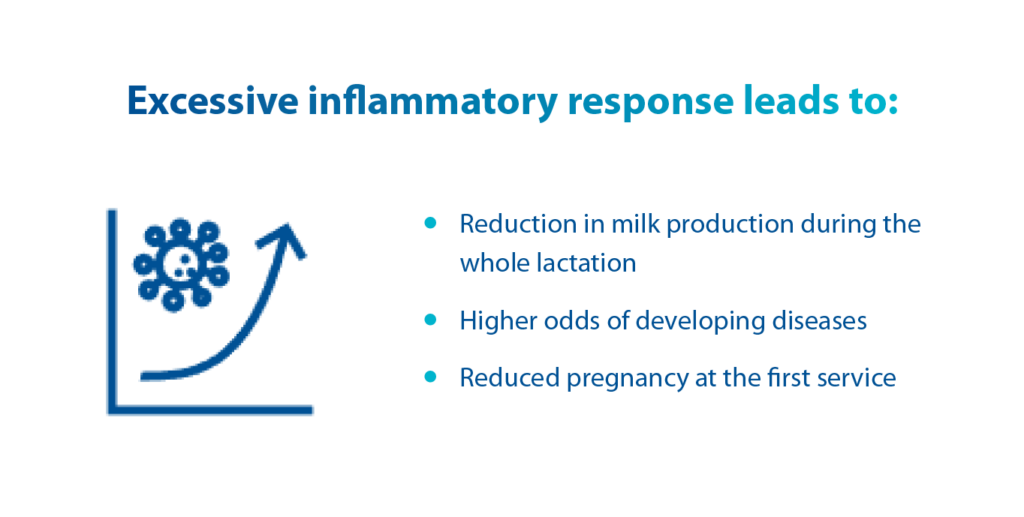
High incidence of diseases
Metabolic challenges faced by cows during the transition period also compromise their immune response, increasing the risk of developing diseases. It is not surprising that 65% of diseases (retention of placenta, metritis, mastitis, displacement of abomasum, etc.) occur in the first three weeks after calving (Carvalho et al., 2019). Surprisingly, when these conditions are detected during early lactation, prompt treatment often results in clinical recovery, and cows appear healthy. However, these diseases cause long-term consequences for the entire lactation.
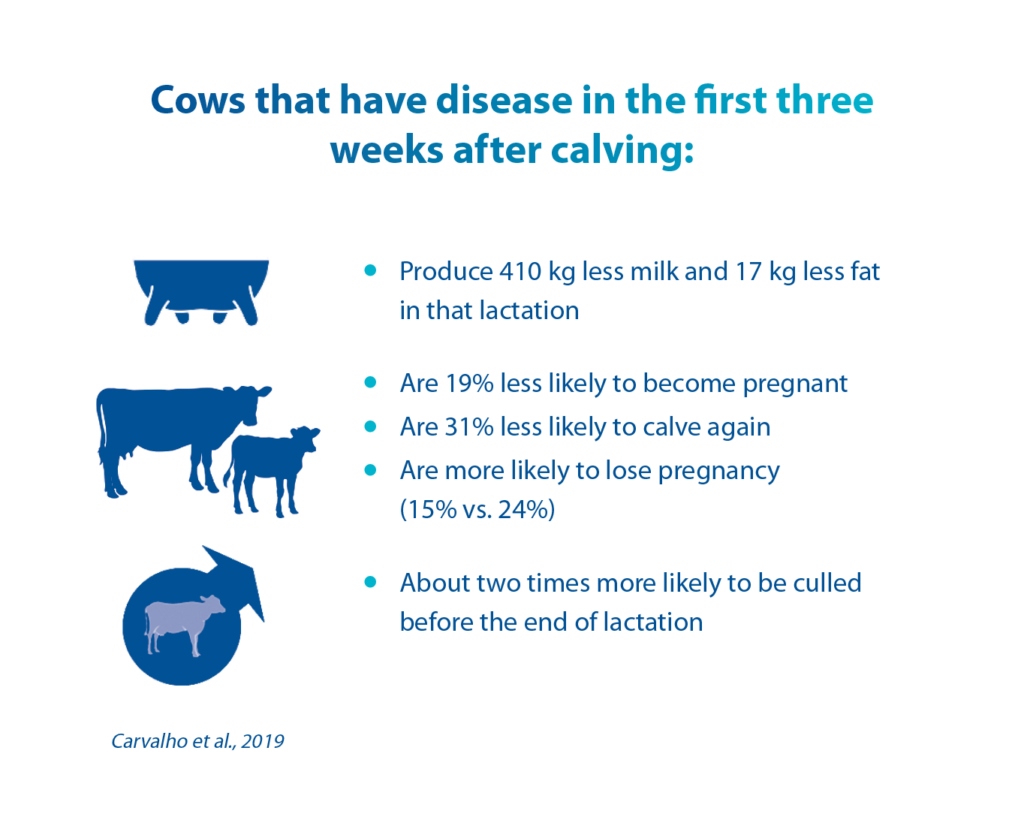
What can we do to improve transition period success in dairy cows?
The transition period encompasses a variety of challenges that, if left unaddressed, could result in consequences to the entire lactation. While some challenges, such as the occurrence of disease and excessive loss of body condition score, are evident and easier to detect; others such as inflammation and metabolic stress are less visible and require more proactive measures to mitigate their consequences. To learn about strategies for reducing these challenges and enhancing the likelihood of successful lactation, you can refer to our article on factors influencing the transition period (Five key factors impacting transitions).
Lactanet offers valuable tools for monitoring the success of the transition period, including KETOLAB and Transition Management Index (available soon).
Talk with your Lactanet representative to learn more!
References



